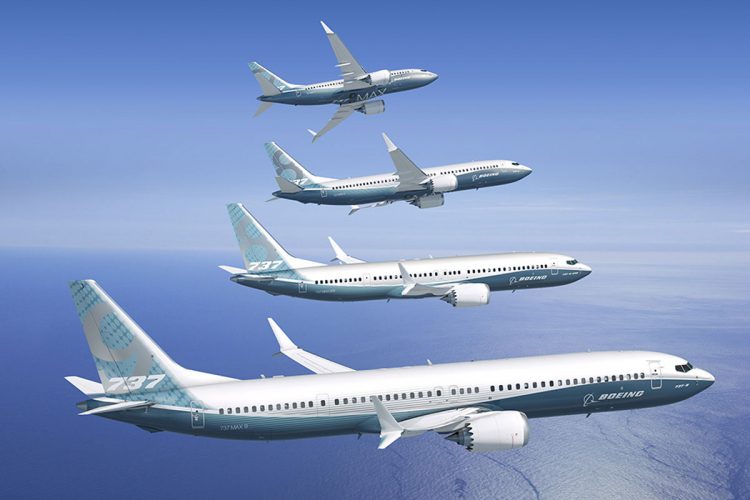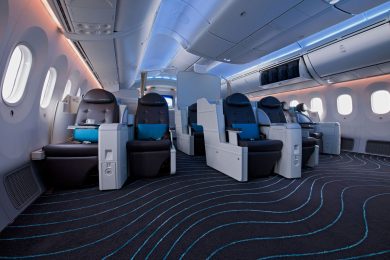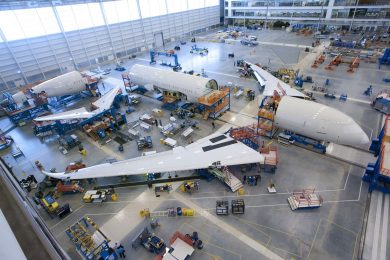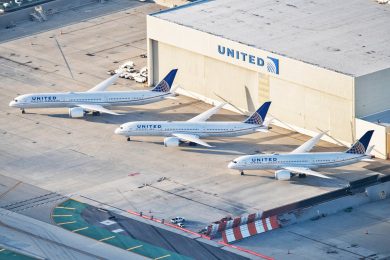On December 15, an important date in aviation history went a little unnoticed. That day, 10 years ago, the 787 Dreamliner was making its maiden flight. The widebody jet that Boeing has developed with innovations that have driven the market since then. Ironically, the US manufacturer does not seem to understand the importance of the step it took at that time and today suffers precisely because it has avoided facing new challenges in the aerospace industry.
The long and painful crisis of the 737 MAX clearly demonstrates this perception. By launching the 787 at the beginning of the last decade, Boeing tried a new approach by imagining a different scenario for commercial aviation. But when it was time to repeat that same reasoning in the aisle jet segment, the company preferred to deny the advances made by the widebody and seek a palliative solution to its most popular aircraft in the world and now relishes the bitter taste of that decision.
But it could have been different. At a time when rival Airbus was scrambling to fight American planes, Boeing was keen to pursue an industry revolution in the form of the Sonic Cruiser project. Of futuristic conception, the twin-engine brought innovations in several aspects, including the flight at a speed close to the sound, which would be reflected in a trip up to 20% faster than subsonic jets.
However, the Sonic Cruiser emerged at a time that was severely affected by the events of September 11, 2001, which made air transport more expensive because of rising oil prices. In other words, Boeing customers were looking for cheaper, not faster planes, and the company canceled the project in late 2002. A month later, however, came the 7E7, a proposal for a twin-engine widebody that took advantage of the lessons learned. with the Sonic Cruiser.
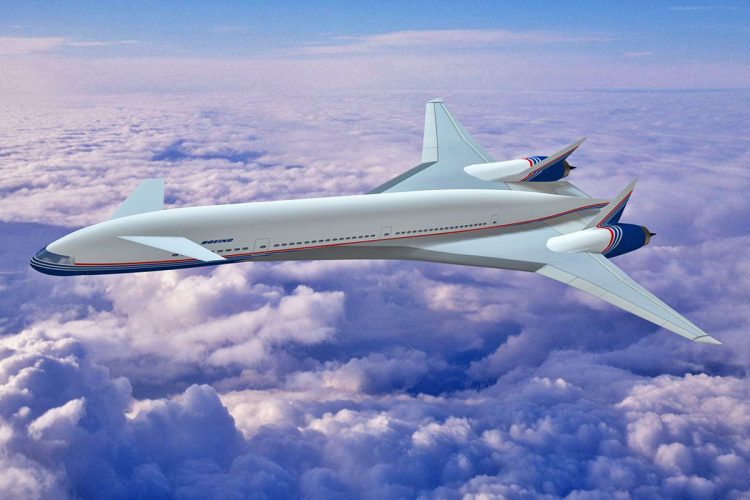
At that time, Boeing had the great insight into seeing a different commercial aviation market than anticipated. While Airbus offered a large jet line that included the successful A330 twin-engine, but also the A340 and A380 quad-engines, the US company concluded that there was an important niche between the narrowbodies and the A380, 777 and 747 giants. .
The 7E7 (whose letter “E” suggested efficiency and a concern for the environment) responded to this yearning with a relatively similar appearance to conventional jets, but with a variety of solutions that together could provide a much better flight both economic terms, such as comfort and sustainability. By the end of 2003, the new twin-engine gained its first and last name, 787 Dreamliner, after a public competition with over 500,000 votes.
The “dream plane” was a reality. Instead of a mostly aluminum structure, it had components made of composite material that reduced its weight and consequently the need for fuel. With a lighter fuselage, it was possible to configure a pressurization system that simulates lower altitudes, bringing more comfort to passengers and crew. The option for the composite also brought another advantage: as there was no risk of oxidation it was possible to raise the humidity in the cabin, another benefit to reduce the effects of the famous jetlag. The 787 design also rewarded its occupants with larger windows, minimizing the sense of claustrophobia for many people.
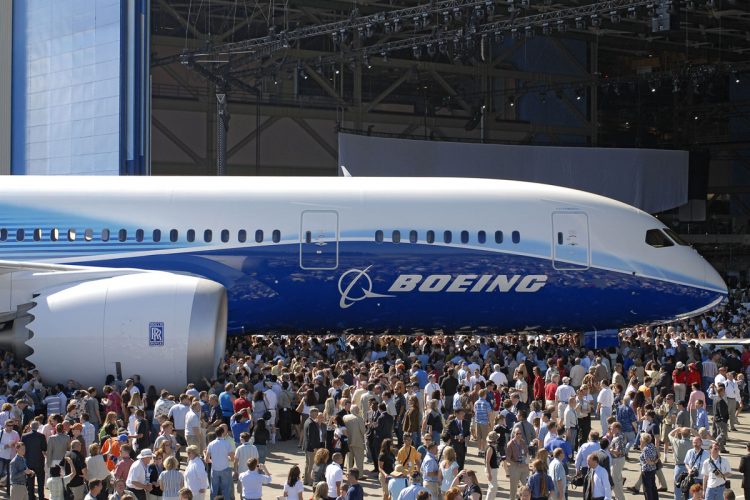
Advanced aerodynamics
Less noticeable, Boeing’s jet shapes made fundamental breakthroughs. With more efficient aerodynamic wings and stabilizers, the 787 promised smooth, economical flight. But it was the addition of more efficient turbofans that completed the equation that made the jet 20% more economical than the 767. According to Boeing, 8% of the lower fuel consumption comes from the GEnx and Trent 1000 TEN engines chosen to fit the model. In addition, the manufacturer decided to replace ordinary batteries for a more modern lithium-ion battery, the same solution seen in electric cars and smartphones.
The 787 meant more than just a modern jet. Boeing itself revised how to make its commercial aircraft by opting for its rival Airbus solution. Instead of a conventional assembly line, the new aircraft would be partially manufactured in various parts of the world, with a huge supply chain and partners compared to other models of the company. For this reason, the widebody has become a global project involving the participation of companies from countries such as Japan, Italy, South Korea, France, Sweden, India, UK and of course a huge list of US suppliers.
To put these components together, Boeing once again took inspiration from Airbus by building the 747 Dreamlifter, versions of its largest aircraft with the fuselage enlarged to carry entire sections of the 787. Finally, Boeing broke a tradition by building a new plant for the jet on the US East Coast in Charleston, North Carolina.
Roll-out with incomplete aircraft
With such a complex and innovative program, problems began to emerge. The first customer, the Japanese airline ANA, ordered 50 planes in 2004 and expected to receive them in 2008. And Boeing intended to make the development of the 787 cheaper and faster than the 777, but things didn’t go as planned. The jet got heavier than anticipated and the company took longer than expected to organize its production chain. The first prototype was not assembled until 2007 and it was considered to reduce the use of noble materials such as titanium to reduce costs.
If the list of customers and orders grew, so were the delays, but Boeing wanted to maintain the air of normalcy in the progress of the project and chose a symbolic day for its public presentation, July 8, 2007 which can be written as 7-8-7. The remarkable event made the world know the newest commercial jet from the leading manufacturer in this segment, but later it was known that the prototype was just a “hollow shell”. There were no cockpit, divisions and equipment installed. None of this prevented Boeing from promising its first flight in August, a month after the roll-out.
Several changes to the project schedule then followed until the 787 first flew in December 2009, nearly 30 months after its official roll-out.
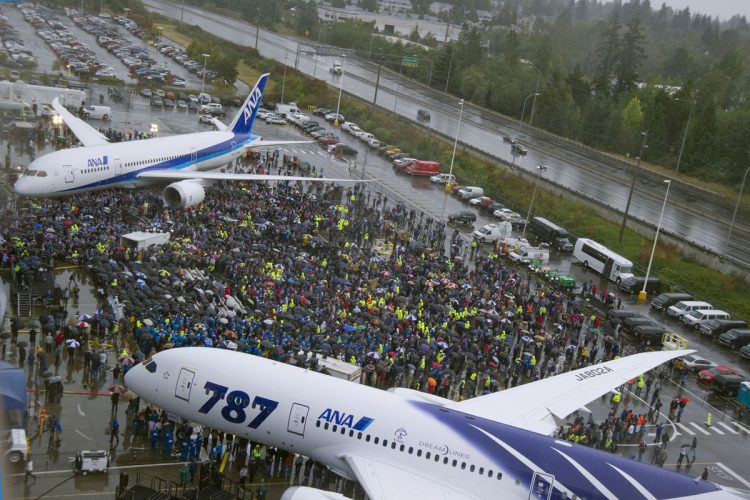
Price for pioneering
In addition to the time-consuming development, 787 had a long certification process, which took 18 months until in August 2011, the FAA and EASA (European Civil Aviation Agency) authorized its entry in service. Jet launch customer, ANA debuted 787 in October 2011 after receiving the first aircraft a month earlier. And the reception to the new widebody was the best possible: the Japanese airline announced at the time that 90% of the passengers who flew it were positively surprised by the flight. Fuel consumption was even higher than expected, reaching 22% in some cases – always compared to 767.
It was not long, however, before the first serious problems occurred. Almost a year after going into service, the jet was first grounded by General Electric engine failures. Other situations were reported in the following years involving fuel leaks, extinguisher problems and even manufacturing defects, but the 787 was marked by the episode of lithium ion batteries.
In January 2013, an ANA flight was invaded by the smell of burning from the battery, it was later discovered. The problem was repeated with other planes, and the FAA eventually banned the 787 from flying until the cause of the fires was discovered, which occurred months later and caused the plane to resume operating only in late April. Recently, Boeing had a serious problem again due to defects in prematurely cracking Trent TEN engine rotor blades. As a result, several 787 have ended up on the ground and the situation is still being resolved by turbofan maker Rolls Royce.
With such a mishap program, the 787 ended up costing Boeing a lot. By 2015, it was estimated that the project would have consumed no less than $ 32 billion. Some have doubted that the company could profit from the aircraft, but since then nearly 1,500 units of the three existing versions have been ordered, a clear argument that yes, the 787 was a exceptional project.
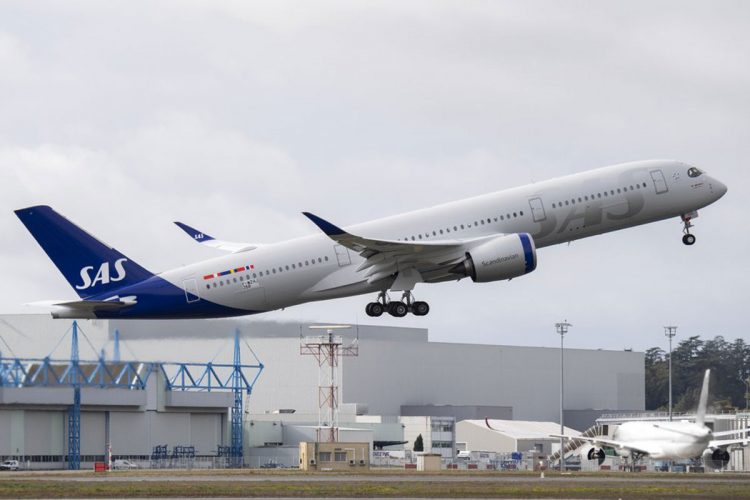
Wasted advantage
Despite the cost and the delay, the 787 was responsible for changing the direction of commercial aviation. If you had previously believed in huge or multi-engine aircraft, today it is agreed that twin engines are the only viable configuration and that implementing weight-reducing solutions is a must, as well as adopting more efficient turbofans that, along with advanced wings, have significant reductions in fuel consumption of these aircraft.
Not all lessons learned from 787 were replicated in the same way, it is true. Airbus, which soon realized the strategic mistake of betting on the giant A380, rushed to respond to Boeing with the A350, but it was years until the jet had its design defined and as such the first flight only occurred in 2013, but without all the advance seen in the rival.
At that time Boeing enjoyed a broad advantage over Europeans. It was time to make use of this learning and move on, and it actually almost happened. In 2006, just before the 787 was unveiled, the manufacturer even announced that it intended to develop a “mini-787” to replace the 737, but the decision was postponed until Airbus launched in December 2010 the A320neo, a revision. of its narrowbody implementing several technological advances, just made possible by Dreamliner.
Under pressure, Americans spent the next year trying to decide which way to go: create a project from scratch or re-invest in the old 737. As has been the case with the A321XLR this year, Airbus has amassed several orders for the A320neo, including American Airlines, a blow to Boeing. In August 2011, the manufacturer took the shortest and riskiest path when launching the 737 MAX.
The rest of the story everyone knows. But what would have happened if Boeing had been able to launch the 787 earlier and decided to retire the 737 shortly thereafter and launch a new single-aisle jet? Hard to say, but as unpredictable as that option was, perhaps the scenario for the American manufacturer’s future was much brighter than today.
